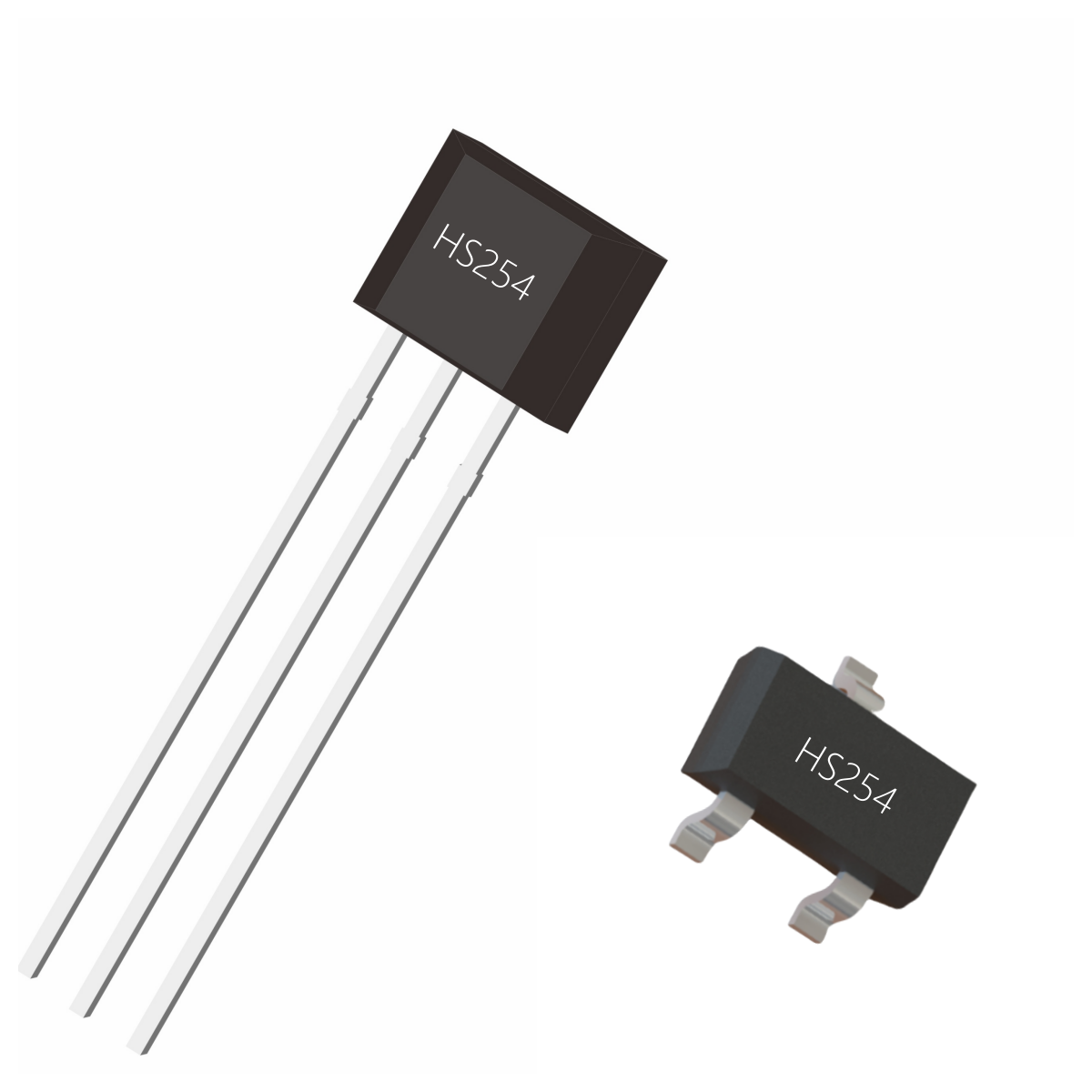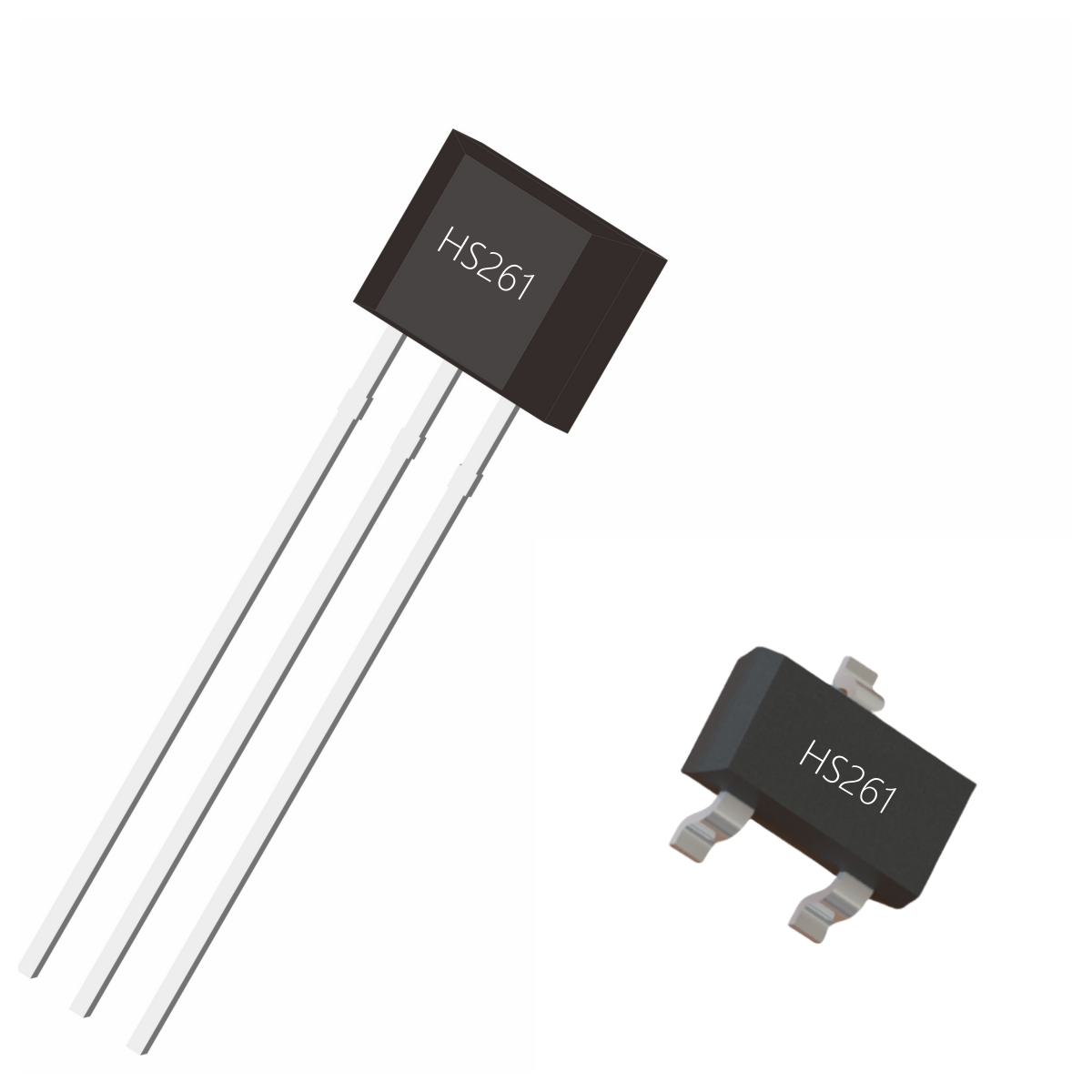The HS249 Hall Effect Sensor IC is manufactured using mixed signal CMOS technology. It uses advanced chopper stabilization techniques to provide accurate and stable magnetic switch points.
The circuit design provides an internally controlled clock mechanism for cycling the power to the Hall element and analog signal processing circuitry. This allows the more power hungry portions of the circuit to be placed in a "sleep" mode. The device is periodically "woken up" by this internal logic and the magnetic flux to the Hall element is evaluated against predefined thresholds. If the flux density is above or below the Bop/Brp threshold, the output transistor is driven to change state accordingly. During the "sleep" cycle, the output transistor is locked in its previous state. The design has been optimized for applications where extended operating life is required in battery powered systems.
When a south pole magnetic field perpendicular to the Hall sensor exceeds the operate point threshold (BOP), the output transistor of the HS249 switches low (turns on). Once turned on, the output voltage is VDS. When the magnetic field decreases below the release point BRP, the output transistor turns off (goes high). The difference between the magnetic operate point and release point is the hysteresis (BHYS) of the device. This built-in hysteresis prevents output oscillations near the switch point and enables clean switching of the output even in the presence of external mechanical vibrations and electrical noise.
Product features
2. Strong RF noise protection
3. 1.65-6V battery powered applications
4. Operating voltage as low as 1.65V, unipolar micro-power Hall switch
5. High sensitivity direct reed switch replacement application
6. Low temperature drift point
7. Ultra-low power consumption 5uA (average)
8. High ESD protection, HBM > ±4KV (min)
9. Totem output
10. RoHS 2011/65/EU compliant and halogen-free
Main applications
1. Solid-state switch
2. Cordless device reminder switch (flip phone/PHS phone/laptop/flip camera)
3. Low duty cycle magnetic sensor switch to replace reed tube
4. Water meter
5. PDA
6. PDVD
7. Laptop
8. Tablet
Product parameters

 English
English Chinese
Chinese Dongguan Hallsen Technology Co., Ltd
Dongguan Hallsen Technology Co., Ltd




